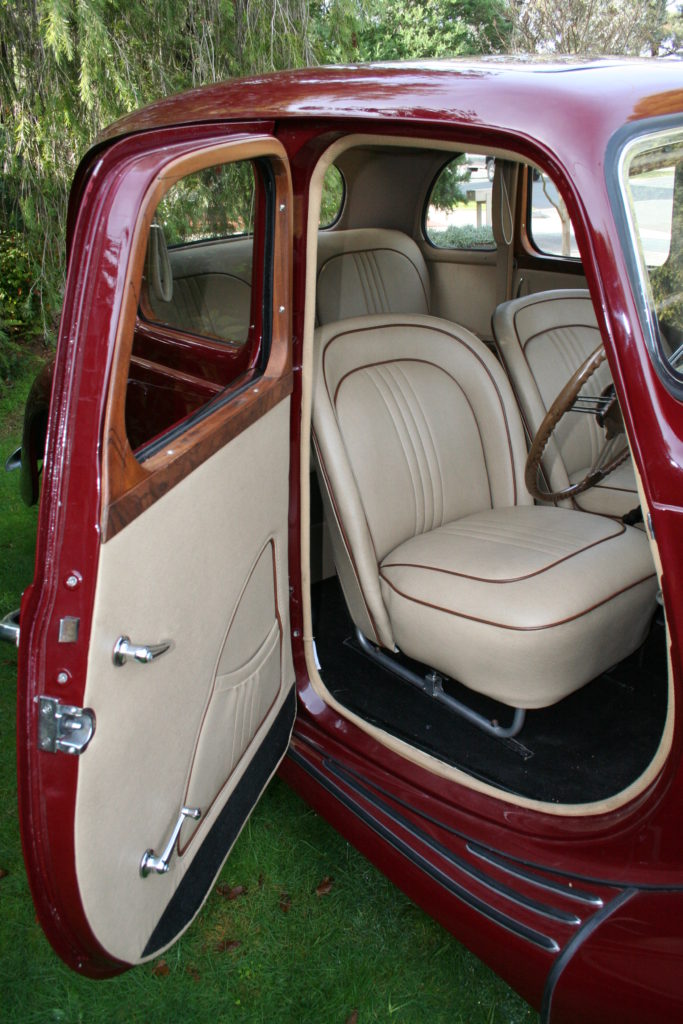My 1949 MGY Type Saloon – Part 2
By Neil Wakeman
Following on from the part 1 article (you can read here) Neil Wakeman, from Victoria in Australia, continues his restoration story of his Y Type concentrating on the engine, interior and Jackall system.
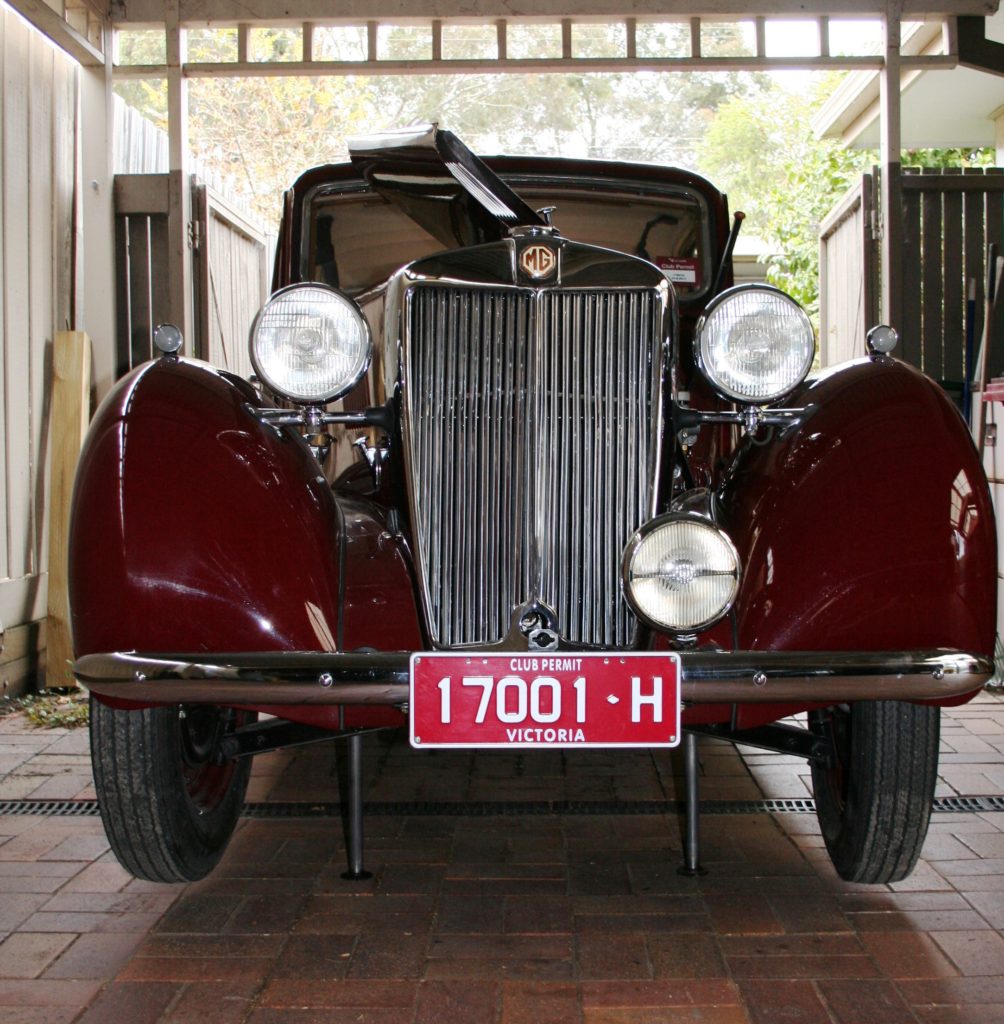
The Jackall system in operation
Engine Rebuild
The engine that came with the car is its matching number original, always a desirable attribute for a committed car restorer. The Y’s power unit was based on the 1,140cc overhead valve engine used in the Morris 10/4 Series M. This version was coded XPJM (M for Morris). The MG version (coded XPAG – G for MG) was increased to 1250cc and a single 1¼ SU carburettor was fitted to the Y Type. This engine type was used in the TB, TC, TD, and early TF Midget sports models, with performance enhancements including twin carburettors and a modified camshaft for the Midgets. The same basic motor was used for the Wolseley 4/44 and was coded XPJW (W for Wolseley, of course).
The motor is a conventional four cylinder, push rod engine with no really special features. Parts to rebuild the motor are readily available from local MG specialists or general parts suppliers. MG T series cars are still being restored in large numbers around the world, so there are still plenty of suppliers. The engine was machined locally and reassembled by the owner, a self-confessed amateur, who has managed to produce a sweet sounding and strong pulling motor.
The engine went through a full rebuild – the crankshaft was crack tested and machined, the block was rebored, camshaft reground, new pistons, rings, bearings, valves, guides, seals were fitted, along with hardened valve seats to enable the use of modern fuels.
XPAG engines are notorious for leaking oil out of the rear main seal and stopping those oil leaks is almost impossible. Some specialist machine shops have developed a ‘fix’ for this problem, but this additional work was not undertaken on Y3498’s engine. It was leak free for the first few weeks but has now gone the way of almost every other XPAG and leaves a drip or two wherever it goes (or at least it did, until a little drip catcher was fitted recently).
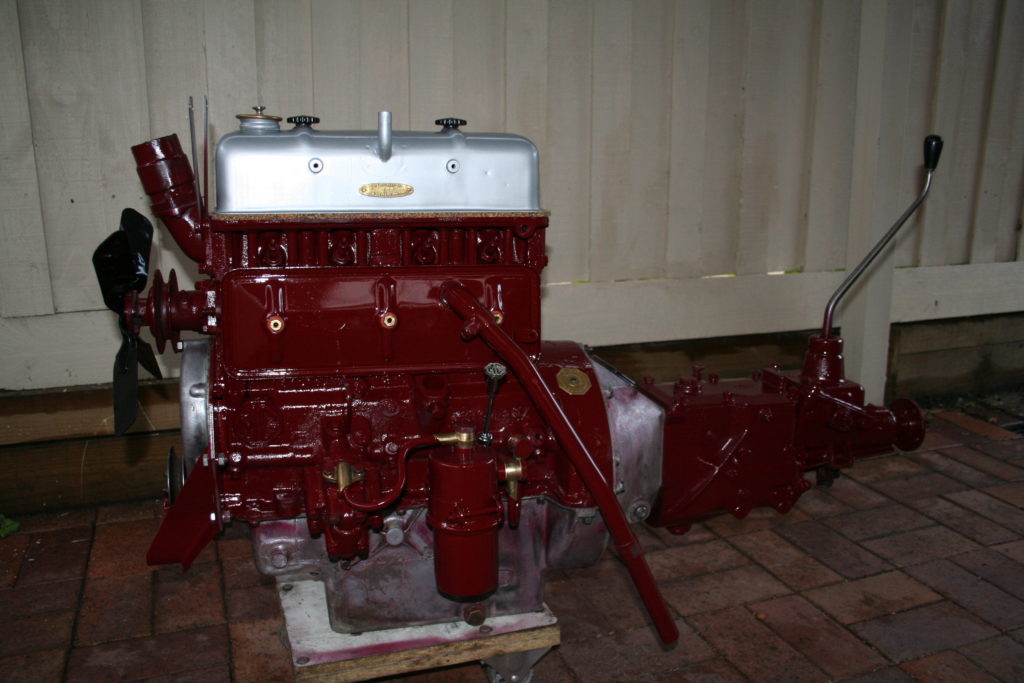
After assembly, the engine was painted MG red, matched to a sample of paint that was taken from an original engine component.
The engine was originally fitted with a disposable steel cased oil filter, now no longer available. A couple of different adapter kits are available from overseas suppliers to enable the use of a modern oil filter. Working from an article on a UK TC owners’ website, Y3498’s owner modified one of the original canisters to take a disposable filter, which when painted looks almost original.
After assembly, the engine was painted MG red, matched to a sample of paint that was taken from an original engine component and a formula listed on the MGY website. Subsequently it was discovered, from the MGY ‘Bible’ (an out-of-print book called ‘Let There Be Y’s’, by David R Lawrence) that the engine in Y3498 perhaps should have been a grey-green colour, but Lawrence acknowledges that it might also have been dark red.
The top of the gearbox was removed and the gears closely inspected without being dismantled – it looked to be in good condition and it was decided to ‘take a punt’ on it being OK, so it was closed up again and installed as is. MGY gearboxes are very robust and this one has proved to be quite good in service.
MGY gearboxes also had an inbuilt problem. In a rather quaint letter, the MG Car Company advised a complaining customer in April 1952 that “All MG 1½ litre gearboxes are susceptible to what we call a slight rattle, more so on the overrun than the drive, particularly when the gearbox oil is warm. There is very little that can be done to eliminate this unfortunate rattle, but you have our assurance that it is due to synchromesh rattle and the gearbox is not likely to give you trouble.” The end! What would modern consumer affairs laws make of that?
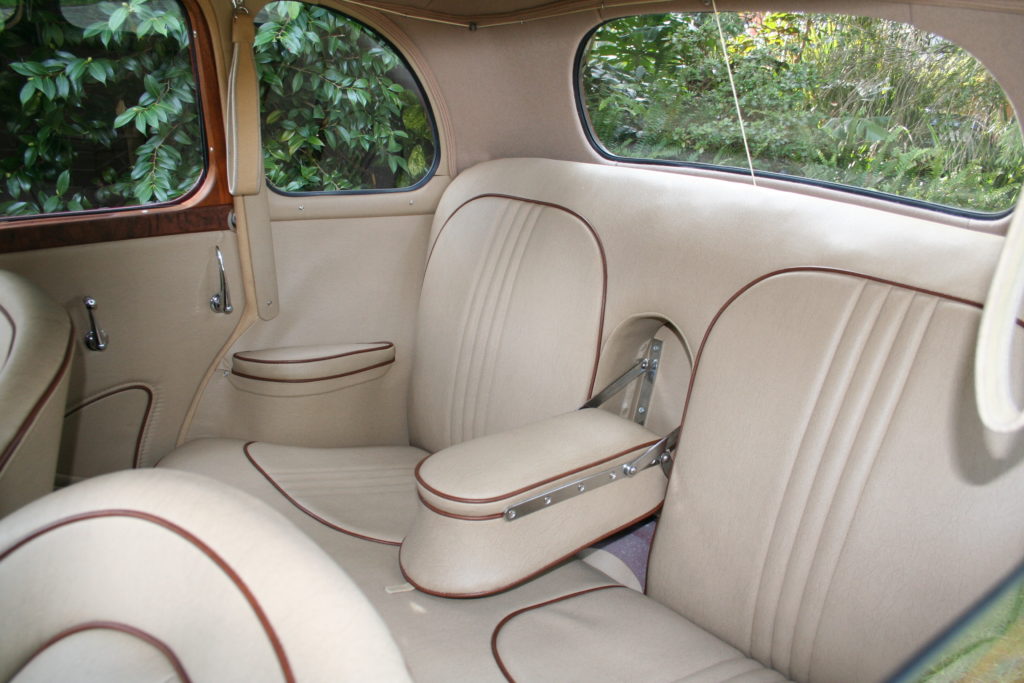
The interior, in a beige colour as per original, looks stunning and is a credit to the motor trimmer.
Interior
The MGY featured a luxurious interior for a small car of the era, with leather faced seats, plush carpets and lots of real wood described as being ‘in the best British tradition’. The windscreen, sunroof and door windows are framed with solid timber of uncertain origin – different sources have described it as either walnut or mahogany. Fortunately for the owner of Y3498, all the complicated wood trim pieces came with the car and only needed sanding and revarnishing to make them like new again. The pieces that were missing were relatively easy to remanufactured.
The dashboard is a very handsome component, made from ½ inch thick ply and veneered in burr walnut. Instruments are set onto one part of the panel, in front of the driver. Although the instruments are circular, they are set behind MG style octagonal openings, with chrome plated edging.
Unfortunately, the original dash was beyond repair. The plywood from which it was fabricated had delaminated, and the veneer was missing in many places so the owner, a keen woodworker, set about making a new one.
The original panel was cobbled together with glue and body filler to make it suitable for a pattern. A new pattern was then made, on a home workshop router table, from 19mm MDF (particleboard) and that was in turn finessed with body filler until any remaining defects were corrected. The MDF pattern was then used to cut a new dashboard from marine ply, again on a router table. The new plywood dash was veneered in burr walnut, which was then sealed with polyurethane and polished.
The interior of the car was trimmed by Jim Lobb, proprietor of Abingdon Trimming, based in Marysville, Victoria. Due to the high cost of leather, the decision was made to re-upholster the seats in quality UK vinyl which looks and feels very much like leather, anyway. West of England pure wool material, also imported from UK, as fitted originally, was used for the headlining.
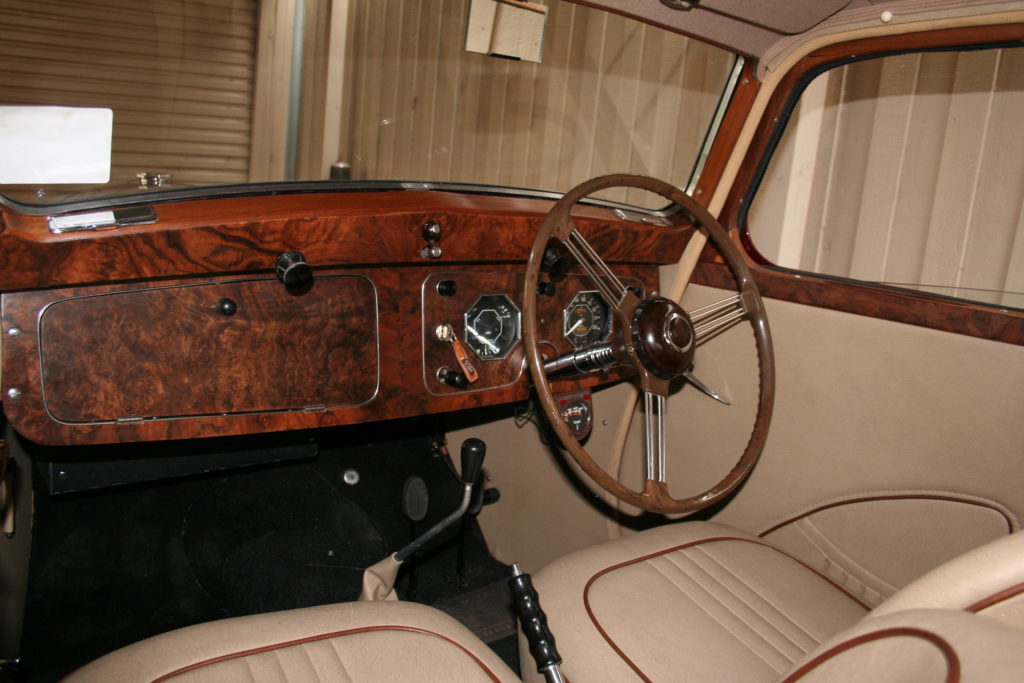
In the car, the dash setup, with its matching veneered fascia rail, certainly looks very British – and is real wood!
An extra feature is a rear window blind which is controlled by a draw cord running along the roof line to a position above the driver’s door – we’re not sure of the purpose of the blind, presumably it’s there to block out the glare of headlights of a following car, or perhaps for privacy for a canoodling couple occupying the back seat.
Before Jim could start work on the trim, it was necessary to make and fit wooden battens that are secured inside the all-steel body shell, to give him something to which to tack the trim. This was another challenge as the car’s owner did not have access to a car with the wooden bits exposed, so the battens needed to be cut and fitted using an excellent little ‘how to’ book published by the UK Y Type Register, and a large dose of common sense.
Jackall System
Another interesting feature of the Y Type is an inbuilt jacking system which lifts the car a couple of inches off the ground to enable a wheel to be changed. The system consists of a hand operated pump mounted on the firewall, and four inbuilt hydraulic rams, one adjacent to each wheel.
The pump has a system of valves, to enable the two front wheels to be raised, or the two rear wheels to be raised, or all four at the same time.
The Jackall system was not unique to the Y Type – it was made by an English firm, Smiths Industries, who supplied their equipment to many manufacturers of better-quality British cars of the period. Unfortunately, Smiths is no longer in business and spares, such as hydraulic seals, are now hard to source, making the restoration of the Jackall system another time-consuming part of the restoration project.
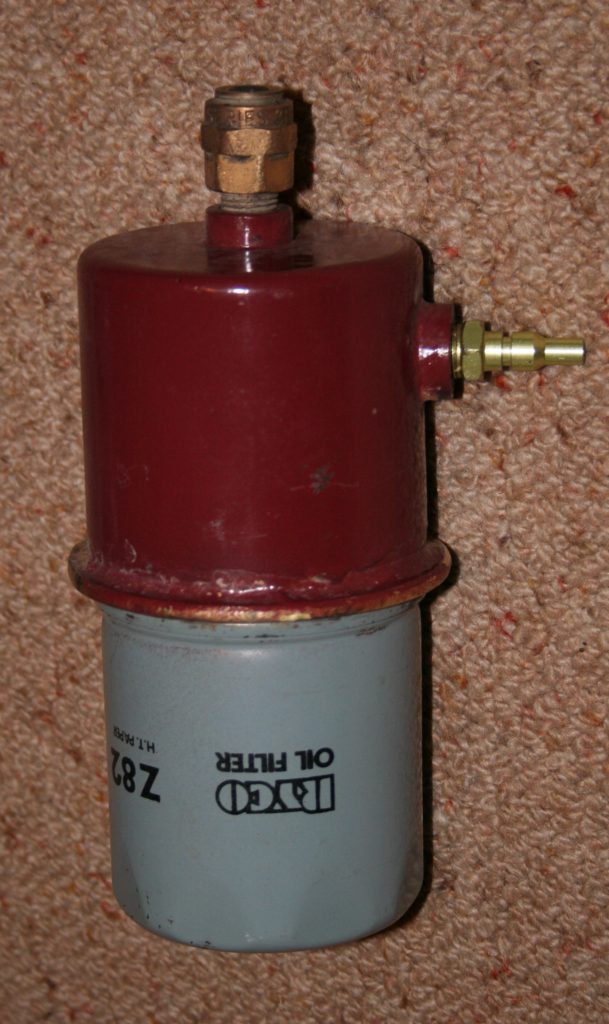
The engine was originally fitted with a disposable steel cased oil filter, now no longer available. A couple of different adapter kits are available from overseas suppliers to enable the use of a modern oil filter.
There are so many interesting features on a Y Type that it’s difficult to explore them all in a short feature article. Some of these are ‘throwbacks’ to an earlier time, whilst others are quite advanced for a car that was, in effect, designed in the late 1930s.
At the top of the list is the groundbreaking front suspension arrangement which gives a very comfortable ride. The rack and pinion steering is light and responsive, quite unlike other classics of the time.
Other ‘dinky’ features include semaphore arms controlled by a rotating switch in the centre of the steering wheel. A clockwork motor inside the switch cancels the semaphores automatically after about 20 seconds. Restoration of this delicate apparatus was another challenge as the components are made from Bakelite which, after 65 years, is very brittle.
The Y is fitted with a single Lucas FT57 driving/fog light mounted behind the front bumper, to the left of the radiator. This light is wired through the car’s lighting system and cannot be switched on unless at least the parking lights are in use.
The car’s windscreen is hinged at the top and there is a winder on the dash, to open it outwards at the bottom, for ‘flow through’ ventilation. It also has a sunroof as standard equipment, a centre arm rest for the rear seat passengers and four individual ash trays, one per passenger!
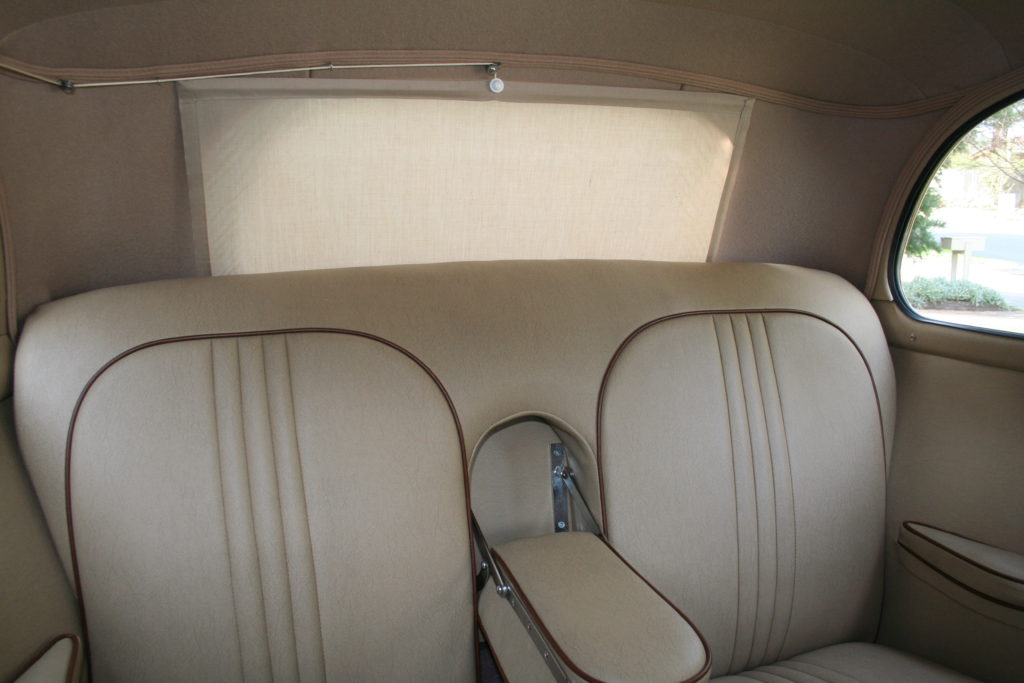
The rear blind operated by the driver via a cord.
Y3498 is fitted with 1940s Ace Rimbellisher wheel trims, which were a popular accessory of the period, and came with the car. These particular trims are original and are a testament to the quality of a product made 65 years ago – the chrome plating is still in excellent condition, with just minor pitting that can only be observed on very close examination.
Challenges
Whilst an MGY is no more difficult to restore that any other car, there are still quite a few challenges for the restorer. The first of these would possibly be the range of odd (by 2013 standards) bolts and threads used throughout the car. BSF threaded bolts, which are becoming quite difficult to source, were used throughout.
The engine has oddball metric bolts with Whitworth heads (said to be a hangover from the 1930s when Morris purchased engines from France and ordered them with different heads because Morris factories already used Whitworth spanners!) A set of Whitworth tools is an essential requirement for a restorer of these, and other Nuffield vehicles of the period.
The crown wheel and pinion seems to be unique to the MGY. Morris 10 components can be used but the gearing is different, with one more tooth on the crown wheel – the Morris has 37 teeth, the Y has 36. In a practical driving sense, the difference would probably be barely noticeable.
The ash trays in the rear of the front seats also seem to be unique to the Y – made originally from Bakelite, most are by now cracked and broken and it’s a fortunate owner who has a pair of ashtrays in good original condition. Any that do come up for sale on the internet are snapped up quickly. The owner of Y3498, with the assistance of a friend, has made some exact replicas, cast from two-part plastic in a silicone rubber mould, and these look like the real thing when painted dark brown to resemble Bakelite.
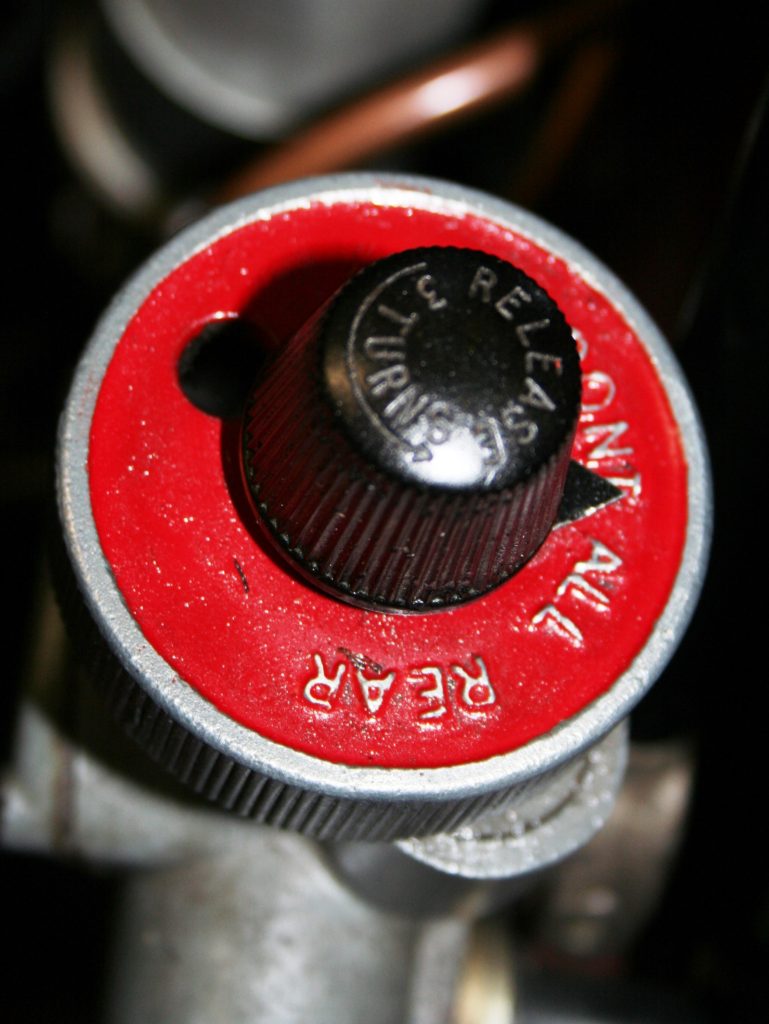
The Jackall system control knob.
On the Road
For its age, the Y is surprisingly lively for a car weighing just under 1,000kg unladen and powered by a 1¼ litre engine.
Performance figures provided in the official Nuffield maintenance manual says the Y will accelerate from 0 – 40kph (24mph) in 7.5 seconds, 0 – 80kph (49mph) in 18.8 seconds and 0 – 100kph (62mph) in 29.5 seconds. Maximum speed claimed is 115kph. Contemporary independent road tests show similar results. Fuel consumption is listed as 8.5 – 10.5 litres per 100 kilometres. Brakes are quite effective, but care needs to be taken when jousting with modern traffic.
Ride is quite comfortable and the car tracks and corners nicely, albeit with some body roll. Seating position is reasonably comfortable although the backrest leans back too far for this driver’s taste. The individual bucket seats can slide forwards and backwards, but the back rest is fixed and therefore not adjustable for rake.
Summary
In its day, the MG Y Type was universally praised by the contemporary motoring press. The Motor, for example described it as “A well-equipped small car coupling high quality and refinement with brisk performance”, views shared by other motoring journalists of the period.
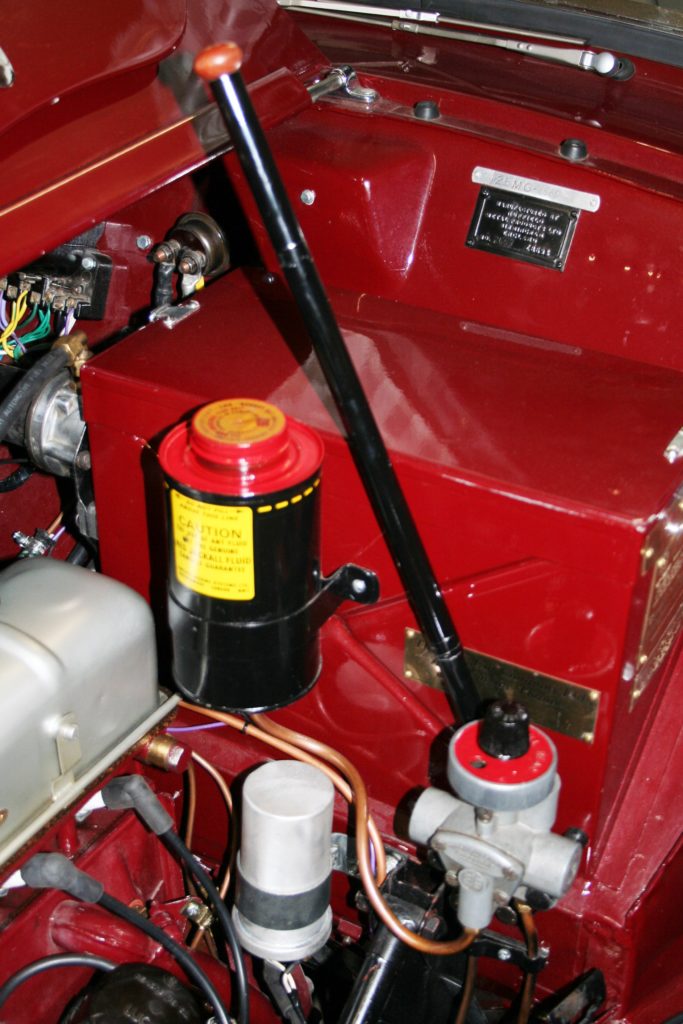
Jackall system, showing the pump with handle, distribution box (marked “Front”, “All”, and “Rear” to enable the operator to select which wheels are to be raised) and the fluid reservoir, with associated copper piping.
The MGY still enjoys a strong following, with dedicated owners around the world. Of the total production of 8,336 Y Types made (of which 6,151 were Ys as opposed to Tourers or YBs), the International MG Y Type Register has currently traced the records of 3,193 (38%) of them (1,254 or 20% of the Series Y), including many that have been scrapped over the years. The site also has a photographic record of 289 Y(A)s, including 93 in Australia, and can be located at www.mgytypes.org.
Neil Wakeman (Owner/restorer of Y3498)

 MG Car Club
MG Car Club